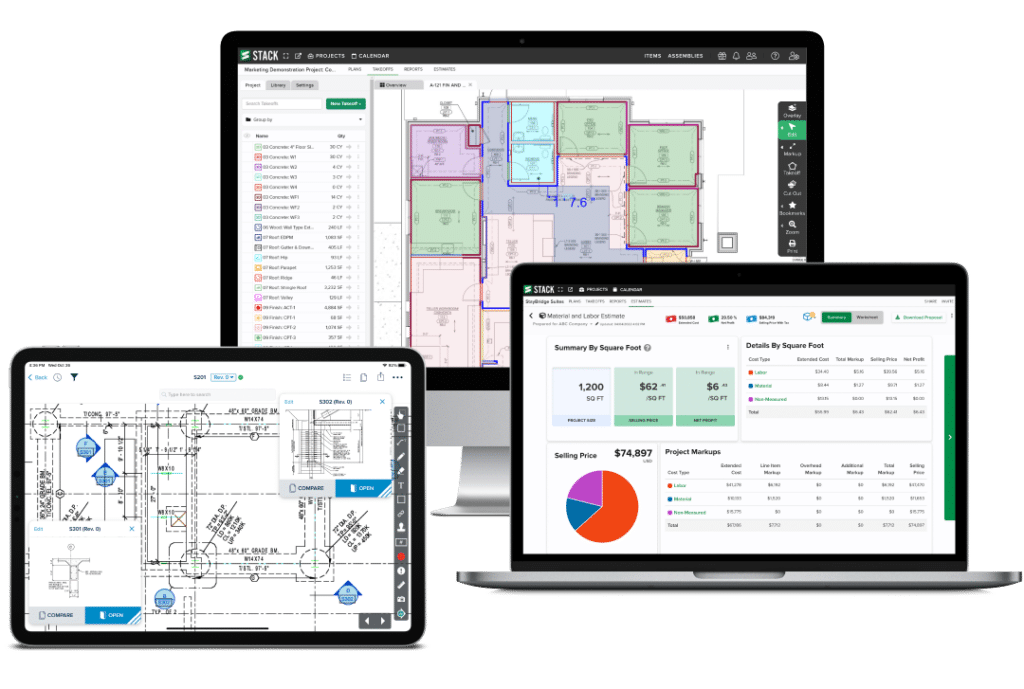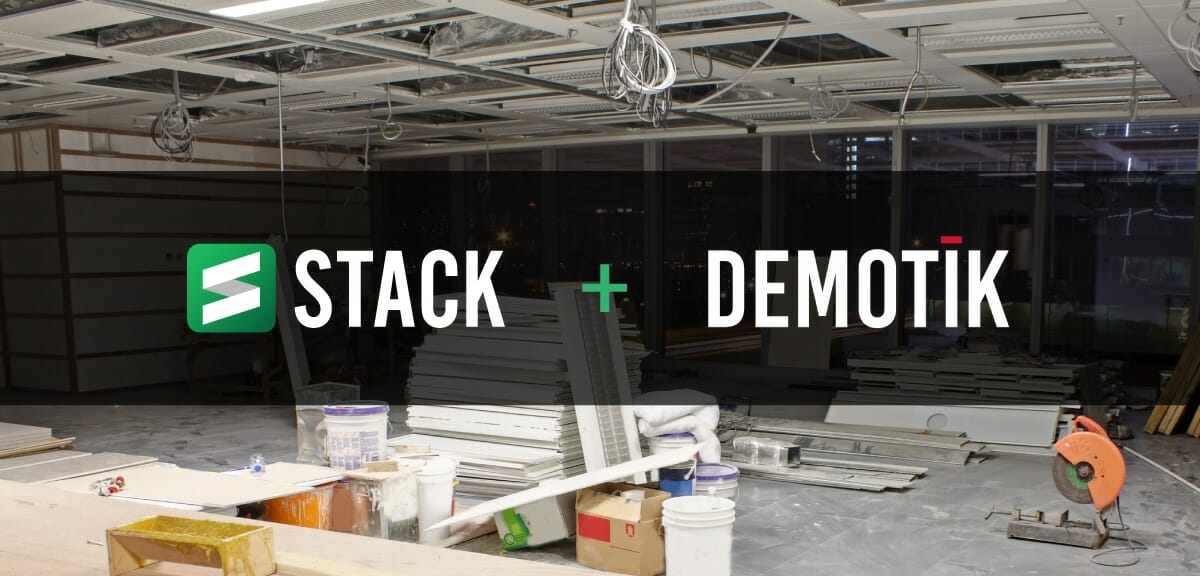
Clouds – they’re not just in the sky anymore. In the popular world of cloud computing, the options for storing data and managing your company’s workflow can be overwhelming. There is public cloud, private cloud, and hybrid cloud. But which option is best for your business?
Well, do you want your data where you need it when you need it? Unfortunately, you won’t get that accessibility with hybrid cloud services that are popping up in the construction industry. This type of cloud infrastructure is a combination of cloud environments, which means your highly valuable data is stuck in between the heaven and hell of accessibility.
We’ll guide you through what is a hybrid cloud, the disadvantages of this environment, and why a true cloud-based system is best for your processes.
Bid Faster. Win More. Build Smarter.
Get your FREE account today to:
- Increase Team Efficiency
- Complete Estimates Faster
- Generate More Revenue

What Is a Hybrid Cloud?
Before understanding hybrid clouds, you need to know what public and private clouds are. A public cloud is typically a subscription service for data storage created by an IT infrastructure. A private cloud is dedicated to a single end-user, completely owned by an organization and not shared. Think of a public cloud like an apartment and a private cloud like a home. Or renting a scissor lift for a job versus owning one for your business. A public cloud is a “rented” or subscription model opposed to a private or “owned” one.
A hybrid cloud is when your data infrastructure operates in a combination of on-premise and private and public cloud environments. It includes the network, hosting, and web service features of an application. These environments must be tightly interconnected with each other, essentially functioning as one.
The most common use of hybrid cloud is a public cloud data storage area with an on-premise desktop installed client. ConstructConnect and DESTINI Estimator are examples of hybrid cloud environments in the preconstruction software space. Both are built the same way, with customer data stored and shared on the cloud, but the user is required to install a desktop client on their computer. Unfortunately, there are significant drawbacks to using hybrid cloud for your preconstruction process.
The Disadvantages of Hybrid Cloud in Preconstruction
– Complex to manage – with so many choices and new tools coming out daily, adding hybrid to your workflow can be daunting. There are multiple environments and components to manage, requiring additional time, resources, and investment.
– Not compatible – On-premise and public clouds are not easily synchronized and can cause latency issues.
– It’s not a quick adoption – Building a hybrid cloud is a slow process that requires a lot of strategy and deliberate steps to plan.
– Less frequent updates – With on-premise software, the updates and improvements to the platform are few and far between.
– It’s not intuitive – Hybrid cloud requires users (and IT) to possess specific technical skills.
– Difficult to implement – Using a hybrid cloud, your infrastructure must have strong network capabilities, storage, and servers, all of which are time-consuming and make your data vulnerable to inaccuracies.
– Complicated operations – Having multiple cloud and on-premise environments is confusing for businesses to keep organized.
Why 100% Cloud-Based Is Best for Contractors
Mobility and collaboration
Cloud-based tools give you access to your data anytime, anywhere. This allows you to bridge the gap between the office and the field, streamlining workflows and connecting all stakeholders involved in your project. STACK’s project management solution allows you to access plans in offline mode, further ensuring you have the documents you need when you need them and then automatically syncs when Wi-Fi becomes available again.
Increased accuracy
Cloud-based tools provide a single source of truth for your company’s data, which significantly reduces the likelihood of working off old documents and making costly mistakes.
Scalability
STACK uses a public cloud platform that allows flexibility of an infrastructure that scales with your business needs in either direction.
Lower capital expenditure
Hybrid clouds require a significant investment for building the enterprise cloud, involving dedicated IT personnel, servers, and data storage devices. With 100% cloud-based platforms like STACK, you don’t pay for the management and operation of the software and hardware. Our pricing plan is fixed annually per user, helping you budget your needs.
Reliability
Cloud-based computing has services across multiple data centers. STACK uses two data centers on opposite sides of the United States. In the case of one data center becoming incapacitated, our operational team can redirect customers to the other data center with minimal downtime.
Automatic software updates
SaaS models of cloud-based computing ensure regular software and security updates on behalf of users. STACK is constantly investing in and improving features, pushing frequent updates to the app.
The benefits of cloud-based are clear. There’s only one solution that can scale with you, and that’s STACK – a full-service cloud-based construction platform with a team behind you, ready to partner with you to help you grow and meet your full potential. Schedule a demo today to see how STACK can work for you.








